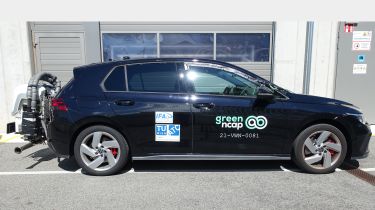What is Green NCAP?
You may have heard about your car’s Green NCAP rating, but what exactly does this rating involve? Here’s our quick guide to Green NCAP...

With car makers continuing to face ever-more-stringent emissions regulations, and with an increasing number of drivers taking far more notice of their carbon footprint, the Green NCAP rating was created to promote the development of cars that are clean, energy efficient and less harmful to the environment.
Just like the similarly named Euro NCAP safety rating, the Green NCAP rating utilises a star system to inform the customer on how harmful their new car could potentially be to the environment. This star rating is determined by testing ‘green’ credentials such as fuel or energy efficiency and emissions output.
It’s not just a case of NCAP taking the manufacturers’ claimed figures at face value, though; the testing involved is rigorous and intended to achieve far more accurate ‘real-world’ results. Testing is carried out in both a laboratory and on the road, to allow for more thorough readings. In fact, to be sure that the car has not been tampered with, the cars aren’t even sourced from the manufacturer.
In the laboratory, the car is put on a chassis dynamometer (also known as a rolling road) and is driven through a set number of altering resistances, with each one representing a real-world scenario, such as city driving. While this is going on, its exhaust gases are analysed to determine what types of emissions are being produced and how many of them.
These lab tests are based on the World-harmonised Light-vehicles Test Cycle (WLTC) testing standards that were introduced in 2017, but NCAP sets more realistic conditions, such as the ambient temperatures in which the car is being tested, to ensure more accurate results.
In addition to the laboratory testing, Green NCAP also takes the car onto the road to conduct a real-world driving test. Exhaust emissions are collected by portable equipment fitted to the car while it is out on test and these are then analysed. This testing is based on the RDE standards from 2018, but Green NCAP once again increases the realism of the parameters being set, including factors such as poorer traffic conditions.
The drive is split into three parts, comprising urban, rural and motorway driving and the car is also driven at different stages of engine temperature, such as from a cold start and at the nominal operating temperature. It is also driven in different styles, ranging from efficiency maximisation through to heavy acceleration and braking.
Once all of the testing is complete and the results have been analysed, all of this data is taken and translated into NCAP’s signature star system, so that it is easy to read the car’s score at a glance.
The star rating indicates the average performance of the car across three main areas of assessment - the Clean Air Index, Energy Efficiency Index and Greenhouse Gas Index. Poor performance in one area will lower the average score and result in a lower star rating.
Green NCAP Ratings
5 stars: Overall excellent performance, showing very low fuel or energy consumption and at the same time emitting low pollutants and greenhouse gasses. Well equipped with emission abatement and fuel-saving technology.
4 stars: Overall good environmental performance; equipped with good and robust emission abatement and fuel-saving technology.
3 stars: Average to good overall performance but equipped with regular emission abatement and fuel-saving technology fitted, not outperforming competitors.
2 stars: Nominal overall environmental performance lacking some emission abatement and/or fuel-saving technology with room for improvement.
1 star: Marginal environmental performance showing that pollutant control and/or energy efficiency is compromised. The environmental performance design mix constituted by minimising pollutants, greenhouse gasses and fuel & energy consumption leaves considerable room for system design improvements.
0 stars: Overall environmental performance just meeting the minimum regulatory standards, possibly outdated emission abatement and fuel-saving technology.
Half stars are also used on tests carried out from 2020 onwards; these are added if a car performs slightly better than a similar rival and are used to partially reward and recognise this extra effort in producing a greener vehicle.
Are you looking to go green? Take a look at our list of the best low emission green cars
Find a car with the experts




